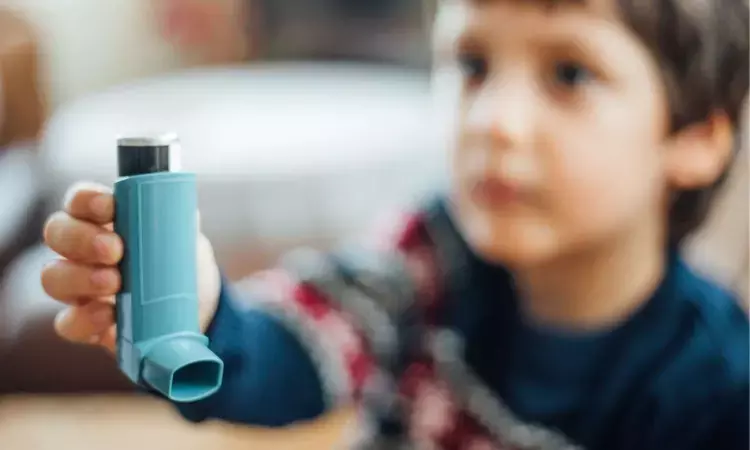- Home
- Medical news & Guidelines
- Anesthesiology
- Cardiology and CTVS
- Critical Care
- Dentistry
- Dermatology
- Diabetes and Endocrinology
- ENT
- Gastroenterology
- Medicine
- Nephrology
- Neurology
- Obstretics-Gynaecology
- Oncology
- Ophthalmology
- Orthopaedics
- Pediatrics-Neonatology
- Psychiatry
- Pulmonology
- Radiology
- Surgery
- Urology
- Laboratory Medicine
- Diet
- Nursing
- Paramedical
- Physiotherapy
- Health news
- Fact Check
- Bone Health Fact Check
- Brain Health Fact Check
- Cancer Related Fact Check
- Child Care Fact Check
- Dental and oral health fact check
- Diabetes and metabolic health fact check
- Diet and Nutrition Fact Check
- Eye and ENT Care Fact Check
- Fitness fact check
- Gut health fact check
- Heart health fact check
- Kidney health fact check
- Medical education fact check
- Men's health fact check
- Respiratory fact check
- Skin and hair care fact check
- Vaccine and Immunization fact check
- Women's health fact check
- AYUSH
- State News
- Andaman and Nicobar Islands
- Andhra Pradesh
- Arunachal Pradesh
- Assam
- Bihar
- Chandigarh
- Chattisgarh
- Dadra and Nagar Haveli
- Daman and Diu
- Delhi
- Goa
- Gujarat
- Haryana
- Himachal Pradesh
- Jammu & Kashmir
- Jharkhand
- Karnataka
- Kerala
- Ladakh
- Lakshadweep
- Madhya Pradesh
- Maharashtra
- Manipur
- Meghalaya
- Mizoram
- Nagaland
- Odisha
- Puducherry
- Punjab
- Rajasthan
- Sikkim
- Tamil Nadu
- Telangana
- Tripura
- Uttar Pradesh
- Uttrakhand
- West Bengal
- Medical Education
- Industry
Indirect airway hyperresponsiveness test may help ascertain correct ICS dose for better asthma control in kids

In a recent study, Janusz Ciolkowski and team found that indirect airway hyperresponsiveness (AHR) test using hypertonic saline in determining the appropriate dose of inhaled corticosteroids (ICS) increased asthma control in children. The findings were published in Pediatric Pulmonology.
The study involved 104 children aged 7 to 15 years with mild to moderate atopic asthma. These patients were closely monitored for asthma control and treatment over a period of one year. They were randomly divided into two groups: a symptom-only monitored group and a group where therapy adjustments were made based on both symptoms and the severity of AHR. Throughout the study, various parameters such as spirometry, exhaled nitric oxide, and blood eosinophils (BEos) were assessed every three months.
The results revealed a notable reduction in the number of mild exacerbations in the AHR group compared to the symptom-only group. The AHR group experienced 44 mild exacerbations, while the symptom-only group had 85 (absolute rate per patient: 0.83 vs. 1.67; relative rate: 0.49, 95% confidence interval: 0.346–0.717; p < 0.001). However, no significant differences were observed in the mean changes from baseline in clinical, inflammatory, and lung function parameters between the two groups.
The baseline BEos levels were found to correlate with AHR and were identified as a risk factor for recurrent exacerbations in all patients. Surprisingly, there was no significant difference in the final ICS dose between the AHR and symptom-only groups. The mean ICS dose in the AHR group was 287 (SD 255), while in the symptom-only group, it was 243 (SD 158) (p = 0.092).
These findings suggest that incorporating an indirect AHR test into the clinical monitoring of childhood asthma can effectively reduce the number of mild exacerbations without compromising current clinical control or necessitating higher ICS doses. The hypertonic saline test used in the study offers a simple, cost-effective, and safe tool for monitoring the treatment of mild-to-moderate asthma in children.
The results of this study have important implications for pediatric asthma management. By utilizing the indirect AHR test alongside traditional symptom monitoring, healthcare professionals can make more informed decisions about treatment adjustments, potentially leading to improved asthma control and reduced exacerbations in children.
Source:
Ciółkowski, J., Hydzik, P., Rachel, M., Mazurek-Durlak, Z., Skalska-Izdebska, R., & Mazurek, H. (2023). Childhood asthma treatment based on indirect hyperresponsiveness test: Randomized controlled trial. In Pediatric Pulmonology. Wiley. https://doi.org/10.1002/ppul.26556
Neuroscience Masters graduate
Jacinthlyn Sylvia, a Neuroscience Master's graduate from Chennai has worked extensively in deciphering the neurobiology of cognition and motor control in aging. She also has spread-out exposure to Neurosurgery from her Bachelor’s. She is currently involved in active Neuro-Oncology research. She is an upcoming neuroscientist with a fiery passion for writing. Her news cover at Medical Dialogues feature recent discoveries and updates from the healthcare and biomedical research fields. She can be reached at editorial@medicaldialogues.in
Dr Kamal Kant Kohli-MBBS, DTCD- a chest specialist with more than 30 years of practice and a flair for writing clinical articles, Dr Kamal Kant Kohli joined Medical Dialogues as a Chief Editor of Medical News. Besides writing articles, as an editor, he proofreads and verifies all the medical content published on Medical Dialogues including those coming from journals, studies,medical conferences,guidelines etc. Email: drkohli@medicaldialogues.in. Contact no. 011-43720751


